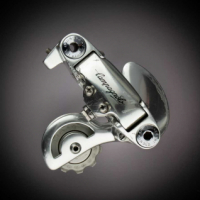Seemingly trivial things that intrigue you
Comments
-
Part of the building regulations covering accessibility.TheBigBean said:
What's that?Pross said:Might struggle for Part M compliance with houses on stilts too.
1985 Mercian King of Mercia - work in progress (Hah! Who am I kidding?)
Pinnacle Monzonite
Part of the anti-growth coalition0 -
Nothing in themselves, just that there are easier and more effective approaches. It's a lot of extra building which doesn't provide usable space. It also means deeper foundations as you are concentrating the weight of the building on a small surface area. They make more sense in a continuously wet area like marshland,TheBigBean said:
What's wrong with stilts? You sound like I have proposed something contemptible.rjsterry said:
We should avoid building on flood plains. And put in more mitigation upstream. There are also ways of building that are more flood resilient without resorting to stiltsTheBigBean said:
Yes, it is not a solution for a diverted river or a good one if the land is permanently flooded, but it seems like a decent option to save housing that might be flooded for a few days every 10 years. Clearly I have no idea how the sewage system would work, but I'd imagine there is probably an answer. Either way, it seems like a better idea than building on floodplains and then complaining about flooding.rjsterry said:
All the services and infrastructure are still in/on the ground. So while you might avoid a complete refit of the house, it's still not really habitable during flooding. I would guess that flooding in Norway is from high glacial outflow. There was something similar in Alaska where a big river changed course by a few hundred metres. Stilts aren't going to help there - the buildings were undermined and washed away along with 3-4m depth of subsoil.TheBigBean said:
Go on then, tell me more. At the moment, houses that are not on stilts are built on flood plains. Then they are flooded.rjsterry said:
Think there may be a little more to flood resilience than this.TheBigBean said:
They should be built on stilts as is done in many other places in the world.briantrumpet said:wavefront said:
Whilst I want to laugh at the quip, it’s a little too close to home - there was serious flooding here 8 or 9 years ago and we witnessed quite a number of statics being swept away down the river and smashing into the bridges. The community really rallied around to find accommodation for those who lost their homes, and quite a few businesses permanently closed because of the damage. Took a good few years for the town to get back on its feet.briantrumpet said:I always wondered what the difference was between static caravans and mobile homes.
Sorry to hear that. It's why I didn't post it under another thread. I guess that there are quite a lot of sites that wouldn't get permission for permanent housing because of the risk of flooding.1985 Mercian King of Mercia - work in progress (Hah! Who am I kidding?)
Pinnacle Monzonite
Part of the anti-growth coalition0 -
Such as beavers. Past a certain point, they self replicate. Very cost effective.rjsterry said:
Nothing in themselves, just that there are easier and more effective approaches. It's a lot of extra building which doesn't provide usable space. It also means deeper foundations as you are concentrating the weight of the building on a small surface area. They make more sense in a continuously wet area like marshland,TheBigBean said:
What's wrong with stilts? You sound like I have proposed something contemptible.rjsterry said:
We should avoid building on flood plains. And put in more mitigation upstream. There are also ways of building that are more flood resilient without resorting to stiltsTheBigBean said:
Yes, it is not a solution for a diverted river or a good one if the land is permanently flooded, but it seems like a decent option to save housing that might be flooded for a few days every 10 years. Clearly I have no idea how the sewage system would work, but I'd imagine there is probably an answer. Either way, it seems like a better idea than building on floodplains and then complaining about flooding.rjsterry said:
All the services and infrastructure are still in/on the ground. So while you might avoid a complete refit of the house, it's still not really habitable during flooding. I would guess that flooding in Norway is from high glacial outflow. There was something similar in Alaska where a big river changed course by a few hundred metres. Stilts aren't going to help there - the buildings were undermined and washed away along with 3-4m depth of subsoil.TheBigBean said:
Go on then, tell me more. At the moment, houses that are not on stilts are built on flood plains. Then they are flooded.rjsterry said:
Think there may be a little more to flood resilience than this.TheBigBean said:
They should be built on stilts as is done in many other places in the world.briantrumpet said:wavefront said:
Whilst I want to laugh at the quip, it’s a little too close to home - there was serious flooding here 8 or 9 years ago and we witnessed quite a number of statics being swept away down the river and smashing into the bridges. The community really rallied around to find accommodation for those who lost their homes, and quite a few businesses permanently closed because of the damage. Took a good few years for the town to get back on its feet.briantrumpet said:I always wondered what the difference was between static caravans and mobile homes.
Sorry to hear that. It's why I didn't post it under another thread. I guess that there are quite a lot of sites that wouldn't get permission for permanent housing because of the risk of flooding.
0 -
https://velo.outsideonline.com/urban/recycled-plastic-roads-urbanist-update/
Am I missing something here? (a) it isn't new and (b) surely it is a fantastically good way to generate plastic microparticles?0 -
Surely this should be called plasphalt or asstic.First.Aspect said:https://velo.outsideonline.com/urban/recycled-plastic-roads-urbanist-update/
Am I missing something here? (a) it isn't new and (b) surely it is a fantastically good way to generate plastic microparticles?- Genesis Croix de Fer
- Dolan Tuono1 -
Yes. And introducing more woodland to the upper parts of river basins. Also undoing the straightening and canalisation that was previously popular.First.Aspect said:
Such as beavers. Past a certain point, they self replicate. Very cost effective.rjsterry said:
Nothing in themselves, just that there are easier and more effective approaches. It's a lot of extra building which doesn't provide usable space. It also means deeper foundations as you are concentrating the weight of the building on a small surface area. They make more sense in a continuously wet area like marshland,TheBigBean said:
What's wrong with stilts? You sound like I have proposed something contemptible.rjsterry said:
We should avoid building on flood plains. And put in more mitigation upstream. There are also ways of building that are more flood resilient without resorting to stiltsTheBigBean said:
Yes, it is not a solution for a diverted river or a good one if the land is permanently flooded, but it seems like a decent option to save housing that might be flooded for a few days every 10 years. Clearly I have no idea how the sewage system would work, but I'd imagine there is probably an answer. Either way, it seems like a better idea than building on floodplains and then complaining about flooding.rjsterry said:
All the services and infrastructure are still in/on the ground. So while you might avoid a complete refit of the house, it's still not really habitable during flooding. I would guess that flooding in Norway is from high glacial outflow. There was something similar in Alaska where a big river changed course by a few hundred metres. Stilts aren't going to help there - the buildings were undermined and washed away along with 3-4m depth of subsoil.TheBigBean said:
Go on then, tell me more. At the moment, houses that are not on stilts are built on flood plains. Then they are flooded.rjsterry said:
Think there may be a little more to flood resilience than this.TheBigBean said:
They should be built on stilts as is done in many other places in the world.briantrumpet said:wavefront said:
Whilst I want to laugh at the quip, it’s a little too close to home - there was serious flooding here 8 or 9 years ago and we witnessed quite a number of statics being swept away down the river and smashing into the bridges. The community really rallied around to find accommodation for those who lost their homes, and quite a few businesses permanently closed because of the damage. Took a good few years for the town to get back on its feet.briantrumpet said:I always wondered what the difference was between static caravans and mobile homes.
Sorry to hear that. It's why I didn't post it under another thread. I guess that there are quite a lot of sites that wouldn't get permission for permanent housing because of the risk of flooding.1985 Mercian King of Mercia - work in progress (Hah! Who am I kidding?)
Pinnacle Monzonite
Part of the anti-growth coalition0 -
How far can someone get from their phone in the 10 seconds between texting you and you ringing them?
Far enough from the phone not to hear, every time.0 -
Can't actually read this due to the clusterf*** of requests to accept cookies and subscribe, but would agree, using waste plastic as aggregate in a highly abraded situation sounds like a good way to create two new problems with each one solved.First.Aspect said:https://velo.outsideonline.com/urban/recycled-plastic-roads-urbanist-update/
Am I missing something here? (a) it isn't new and (b) surely it is a fantastically good way to generate plastic microparticles?1985 Mercian King of Mercia - work in progress (Hah! Who am I kidding?)
Pinnacle Monzonite
Part of the anti-growth coalition0 -
What that publisher has done to Velonews and Cyclingtips is one for the annoyances thread. Since most of what they put out is available in a myriad of other places for free, the paywall model is surely idiotic. Its not like it avoids the plethora of advertising banners and pop ups. Shame because initially CyclingTips was worth visiting. Then they sacked several of the best journos and paywalled it.rjsterry said:
Can't actually read this due to the clusterf*** of requests to accept cookies and subscribe, but would agree, using waste plastic as aggregate in a highly abraded situation sounds like a good way to create two new problems with each one solved.First.Aspect said:https://velo.outsideonline.com/urban/recycled-plastic-roads-urbanist-update/
Am I missing something here? (a) it isn't new and (b) surely it is a fantastically good way to generate plastic microparticles?
You can't teach stupid.0 -
Getting something in place to make SuDS schemes better would be a good start too. England is lagging behind Wales on that side of things at present, Wales has introduced SuDS Approval Bodies as part of a statutory process. Basically the local planning authority now has to approve all SuDS proposals whereas in England it is still a bit inconsistent and non-statutory.rjsterry said:
Yes. And introducing more woodland to the upper parts of river basins. Also undoing the straightening and canalisation that was previously popular.First.Aspect said:
Such as beavers. Past a certain point, they self replicate. Very cost effective.rjsterry said:
Nothing in themselves, just that there are easier and more effective approaches. It's a lot of extra building which doesn't provide usable space. It also means deeper foundations as you are concentrating the weight of the building on a small surface area. They make more sense in a continuously wet area like marshland,TheBigBean said:
What's wrong with stilts? You sound like I have proposed something contemptible.rjsterry said:
We should avoid building on flood plains. And put in more mitigation upstream. There are also ways of building that are more flood resilient without resorting to stiltsTheBigBean said:
Yes, it is not a solution for a diverted river or a good one if the land is permanently flooded, but it seems like a decent option to save housing that might be flooded for a few days every 10 years. Clearly I have no idea how the sewage system would work, but I'd imagine there is probably an answer. Either way, it seems like a better idea than building on floodplains and then complaining about flooding.rjsterry said:
All the services and infrastructure are still in/on the ground. So while you might avoid a complete refit of the house, it's still not really habitable during flooding. I would guess that flooding in Norway is from high glacial outflow. There was something similar in Alaska where a big river changed course by a few hundred metres. Stilts aren't going to help there - the buildings were undermined and washed away along with 3-4m depth of subsoil.TheBigBean said:
Go on then, tell me more. At the moment, houses that are not on stilts are built on flood plains. Then they are flooded.rjsterry said:
Think there may be a little more to flood resilience than this.TheBigBean said:
They should be built on stilts as is done in many other places in the world.briantrumpet said:wavefront said:
Whilst I want to laugh at the quip, it’s a little too close to home - there was serious flooding here 8 or 9 years ago and we witnessed quite a number of statics being swept away down the river and smashing into the bridges. The community really rallied around to find accommodation for those who lost their homes, and quite a few businesses permanently closed because of the damage. Took a good few years for the town to get back on its feet.briantrumpet said:I always wondered what the difference was between static caravans and mobile homes.
Sorry to hear that. It's why I didn't post it under another thread. I guess that there are quite a lot of sites that wouldn't get permission for permanent housing because of the risk of flooding.0 -
Something on Nextdoor website about lost leads. Someone saying they'd lost a lead that was of sentimantal value because their dog had wriggled out of it. Surely if one end is attached to a dog the other end should be held by a human.
Then I was reminded of the rule through early summer that dogs in Richmond and Bushy Parks should be on a lead due to young deer and protective mothers, I saw several dogs running round with leads trailing behind them. Presumably so the ignorant twunt of an owner could say they were complying with the rule as the dog was on a lead.0 -
No more illustrated than with the Mississippi.rjsterry said:
Yes. And introducing more woodland to the upper parts of river basins. Also undoing the straightening and canalisation that was previously popular.First.Aspect said:
Such as beavers. Past a certain point, they self replicate. Very cost effective.rjsterry said:
Nothing in themselves, just that there are easier and more effective approaches. It's a lot of extra building which doesn't provide usable space. It also means deeper foundations as you are concentrating the weight of the building on a small surface area. They make more sense in a continuously wet area like marshland,TheBigBean said:
What's wrong with stilts? You sound like I have proposed something contemptible.rjsterry said:
We should avoid building on flood plains. And put in more mitigation upstream. There are also ways of building that are more flood resilient without resorting to stiltsTheBigBean said:
Yes, it is not a solution for a diverted river or a good one if the land is permanently flooded, but it seems like a decent option to save housing that might be flooded for a few days every 10 years. Clearly I have no idea how the sewage system would work, but I'd imagine there is probably an answer. Either way, it seems like a better idea than building on floodplains and then complaining about flooding.rjsterry said:
All the services and infrastructure are still in/on the ground. So while you might avoid a complete refit of the house, it's still not really habitable during flooding. I would guess that flooding in Norway is from high glacial outflow. There was something similar in Alaska where a big river changed course by a few hundred metres. Stilts aren't going to help there - the buildings were undermined and washed away along with 3-4m depth of subsoil.TheBigBean said:
Go on then, tell me more. At the moment, houses that are not on stilts are built on flood plains. Then they are flooded.rjsterry said:
Think there may be a little more to flood resilience than this.TheBigBean said:
They should be built on stilts as is done in many other places in the world.briantrumpet said:wavefront said:
Whilst I want to laugh at the quip, it’s a little too close to home - there was serious flooding here 8 or 9 years ago and we witnessed quite a number of statics being swept away down the river and smashing into the bridges. The community really rallied around to find accommodation for those who lost their homes, and quite a few businesses permanently closed because of the damage. Took a good few years for the town to get back on its feet.briantrumpet said:I always wondered what the difference was between static caravans and mobile homes.
Sorry to hear that. It's why I didn't post it under another thread. I guess that there are quite a lot of sites that wouldn't get permission for permanent housing because of the risk of flooding.
After another huge Danube flood (2009) many countries where the river flowed through them elected to restore flood plains, compensate farmers for having land that was flood plain and keeping them as flood plain etc.
The results were remarkable: a rare species of deer who's habitat was amongst Reeds was revitalised, the areas of flood plain were restored in terms of biodiversity, flooding was reduced significantly, amongst other benefits.seanoconn - gruagach craic!0 -
You know it means they don't want to or can't talk to you. This could cover at least half my day.rick_chasey said:How far can someone get from their phone in the 10 seconds between texting you and you ringing them?
Far enough from the phone not to hear, every time.0 -
When the text is “can you speak now?” That’s unlikelyTheBigBean said:
You know it means they don't want to or can't talk to you. This could cover at least half my day.rick_chasey said:How far can someone get from their phone in the 10 seconds between texting you and you ringing them?
Far enough from the phone not to hear, every time.0 -
Just walked past a ferrari with a roof rack.0
-
There's quite a bit of that stuff on the website Crank and piston:kingstongraham said:Just walked past a ferrari with a roof rack.

seanoconn - gruagach craic!0 -
...0
-
This one was made of wood and looked like it was designed to carry a canoe.pinno said:
There's quite a bit of that stuff on the website Crank and piston:kingstongraham said:Just walked past a ferrari with a roof rack.
 0
0 -
POIDHkingstongraham said:
This one was made of wood and looked like it was designed to carry a canoe.pinno said:
There's quite a bit of that stuff on the website Crank and piston:kingstongraham said:Just walked past a ferrari with a roof rack.
 seanoconn - gruagach craic!0
seanoconn - gruagach craic!0 -
Found it on twitter. Looks like outside tesco in new Malden.pinno said:
POIDHkingstongraham said:
This one was made of wood and looked like it was designed to carry a canoe.pinno said:
There's quite a bit of that stuff on the website Crank and piston:kingstongraham said:Just walked past a ferrari with a roof rack.

0 -
It has always intrigued me why parents cycling with children will make the kids wear a helmet but not wear one themselves, still see this quite often.0
-
Kids are more likely to fall off?
I always wear my helmet when I'm out with the kids as otherwise it seems a bit 'do as a say, not as I do' but realistically, I'm not going to fall off doing 10mph through the woods.0 -
I think I read something about them being more effective for kids.vincesummerskRoxcBTr said:It has always intrigued me why parents cycling with children will make the kids wear a helmet but not wear one themselves, still see this quite often.
0 -
It is because children are more susceptible to head injury. Two sides of the same coin.TheBigBean said:
I think I read something about them being more effective for kids.vincesummerskRoxcBTr said:It has always intrigued me why parents cycling with children will make the kids wear a helmet but not wear one themselves, still see this quite often.
But even so, modeling behaviours is a pretty basic part of parenting isn't it?0 -
Yup. My Dutch mother had a real struggle to get me to wear a helmet as she never did.First.Aspect said:
It is because children are more susceptible to head injury. Two sides of the same coin.TheBigBean said:
I think I read something about them being more effective for kids.vincesummerskRoxcBTr said:It has always intrigued me why parents cycling with children will make the kids wear a helmet but not wear one themselves, still see this quite often.
But even so, modeling behaviours is a pretty basic part of parenting isn't it?
Luckily I did get around to it as a grown up so when I did smash my head the helmet took it all no problem.0 -
TheBigBean said:
I think I read something about them being more effective for kids.vincesummerskRoxcBTr said:It has always intrigued me why parents cycling with children will make the kids wear a helmet but not wear one themselves, still see this quite often.
I assume it's because children's skulls still aren't as hard as adults'. Though when I see children's helmets (or anyone's, come to that) resting jauntily somewhere on the back of the head, I'm not entirely convinced of their efficacy.0 -
Exactly, you can't tell kids to do something if you're not prepared to do it yourself. They can smell a fraud a mile off.First.Aspect said:
It is because children are more susceptible to head injury. Two sides of the same coin.TheBigBean said:
I think I read something about them being more effective for kids.vincesummerskRoxcBTr said:It has always intrigued me why parents cycling with children will make the kids wear a helmet but not wear one themselves, still see this quite often.
But even so, modeling behaviours is a pretty basic part of parenting isn't it?2 -
They will grow into them? Because we all know that an 8 year old will still like the bananas in pajamas themed helmet they chose when they were 5.briantrumpet said:TheBigBean said:
I think I read something about them being more effective for kids.vincesummerskRoxcBTr said:It has always intrigued me why parents cycling with children will make the kids wear a helmet but not wear one themselves, still see this quite often.
I assume it's because children's skulls still aren't as hard as adults'. Though when I see children's helmets (or anyone's, come to that) resting jauntily somewhere on the back of the head, I'm not entirely convinced of their efficacy.
Same with the bike itself. Completely okay for it to be so vastly over sized the rider can barely see over the bars.0












